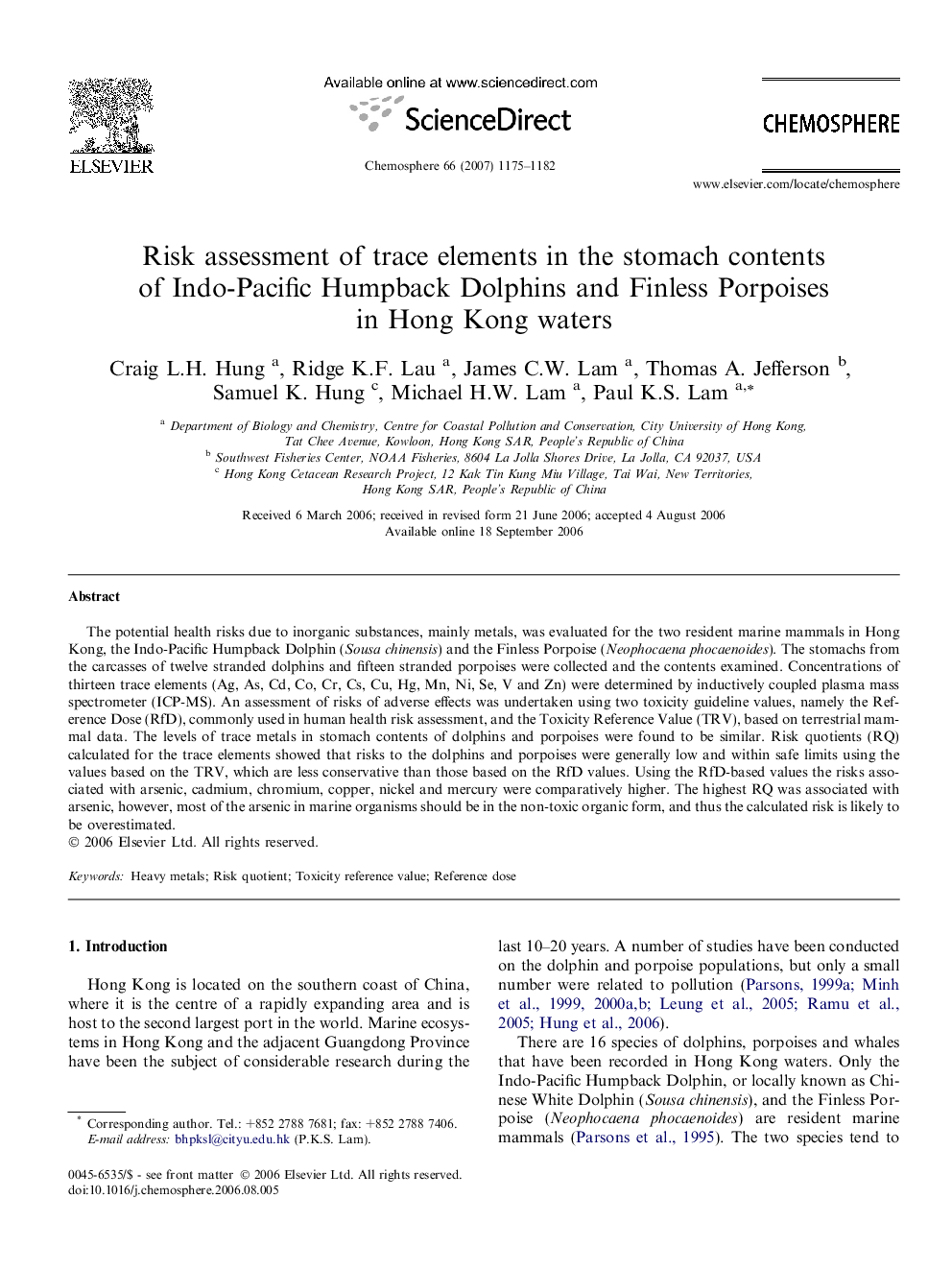| Article ID | Journal | Published Year | Pages | File Type |
|---|---|---|---|---|
| 4415287 | Chemosphere | 2007 | 8 Pages |
The potential health risks due to inorganic substances, mainly metals, was evaluated for the two resident marine mammals in Hong Kong, the Indo-Pacific Humpback Dolphin (Sousa chinensis) and the Finless Porpoise (Neophocaena phocaenoides). The stomachs from the carcasses of twelve stranded dolphins and fifteen stranded porpoises were collected and the contents examined. Concentrations of thirteen trace elements (Ag, As, Cd, Co, Cr, Cs, Cu, Hg, Mn, Ni, Se, V and Zn) were determined by inductively coupled plasma mass spectrometer (ICP-MS). An assessment of risks of adverse effects was undertaken using two toxicity guideline values, namely the Reference Dose (RfD), commonly used in human health risk assessment, and the Toxicity Reference Value (TRV), based on terrestrial mammal data. The levels of trace metals in stomach contents of dolphins and porpoises were found to be similar. Risk quotients (RQ) calculated for the trace elements showed that risks to the dolphins and porpoises were generally low and within safe limits using the values based on the TRV, which are less conservative than those based on the RfD values. Using the RfD-based values the risks associated with arsenic, cadmium, chromium, copper, nickel and mercury were comparatively higher. The highest RQ was associated with arsenic, however, most of the arsenic in marine organisms should be in the non-toxic organic form, and thus the calculated risk is likely to be overestimated.
